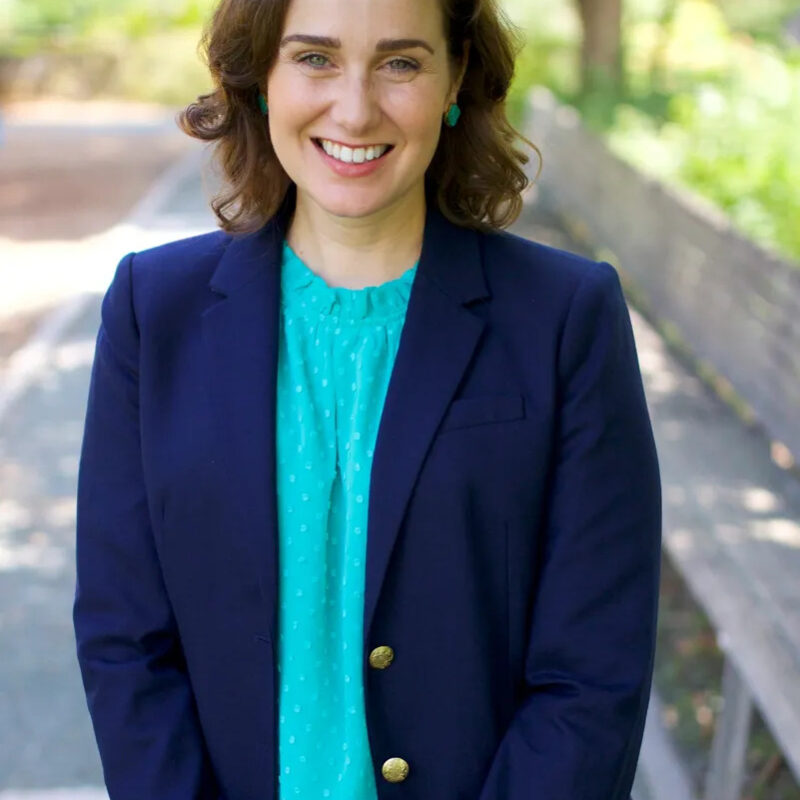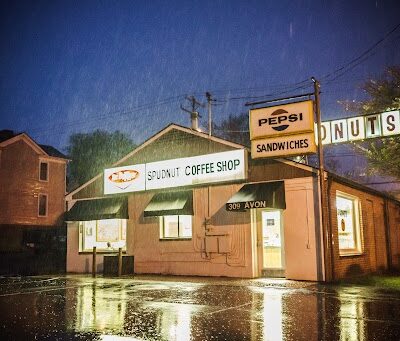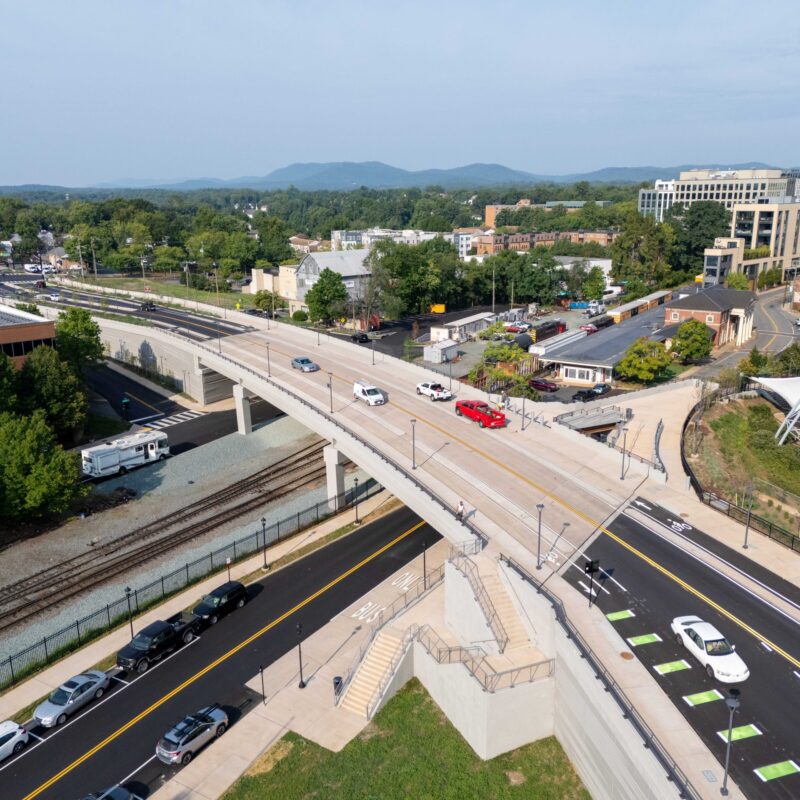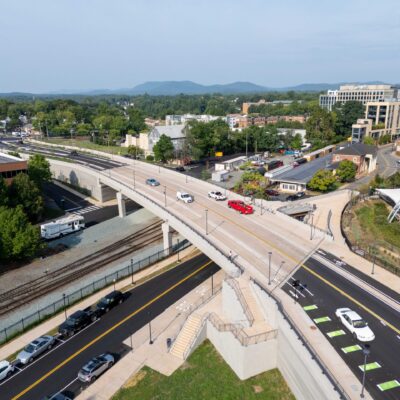In the second panel of Rosamond Casey’s 10-panel exhibition of Capitol Hill imagery, “Men In Suits: A Day on the Hill,” there are no men in suits. Instead, there’s a conference room with chairs in rows and a microphone at a podium, and then a second image of two pay phones. It’s incredibly evocative, practically bleeding with intrigue.
But the third panel snaps us out of that romance. A jacketless man with his red tie flipped over his shoulder gazes at a passing young woman in jeans and sneakers. Her very contemporary ordinariness is a sharp reminder that whatever events may happen on Capitol Hill, or Wall Street for that matter, are not theater, though they may be theatrical. They are real; they have effects.
|
Local artist Rosamond Casey upsets the creases with works like "Initiation" (pictured) in "Men In Suits" at McGuffey Art Center. |
Casey’s show is a version of her handmade book by the same name. These 10 works—photo collages under painted Plexiglass—come from her travels in and around Capitol Hill, furtively shooting pictures of suited men. The project’s intro text risks religious overtones, calling the 10 panels “stations,” and the idea that the viewer proceeds through something akin to the stations of the cross turns out to be significant.
In, for example, the first panel, a man’s sitting legs and feet take on a weirdly vulnerable air in their socks, creased slacks and loafers. Suits, though they project power, are not physically protective, not actual armor; in that way they’re like religious garments. And indeed, in the seventh panel, The Passion, the luminous robed figure of Jesus appears within an outdoor scene full of cops, security guards, and more men in suits, under the imposing neoclassical maze of the Capitol’s ground floor.
Casey leaves it up to the viewer to fill in the meanings of her terms “flagellation” and “redemption,” and to make connections among biblical times, the 19th century when the Capitol was built, and the present. But she leaves no doubt that meanings and connections are there; they resonate unnervingly because she’s so successful at making the iconic man’s suit strange again. In motion, as she points out, suits lose their “columnar structure” and become “bird-like.” And indeed, these men are misshapen and grotesque, with jackets flapping and pants swirling; their uniform darkness seems to make them into automatons or animals.
When we’re seduced into looking this closely at figures we might see every day, we return to something like innocence, gazing with amazement at the trappings of power in what seems like the world’s dark center.






